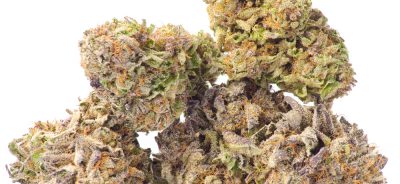Blog Post
Sativa Vs Indica
When it comes to marijuana, the “sativa vs indica” debate has been raging for years. Some say that sativas are uplifting and stimulate productivity, while indicas are sedating and can induce sleep. But what does this mean? Are you more likely to wake up with a smile on your face after smoking an indica strain or feel a bit lethargic after smoking a sativa one? What are the different types of marijuana, and what is their recommended usage? Read about sativa and indica in this blog post to find out where they come from and how they differ. In this article, we are going to talk about what the difference between sativa and indica is. There is a lot of confusion regarding this topic but let’s try to clear things up for you.

Sativa vs Indica
Sativa is known for its uplifting qualities, with an energetic feeling that can last for hours. On the other hand, indica is thought to be more sedating and calming. Sativas are generally taller plants with longer internodes than indicas. Sativas will also often have a higher THC content which can be anywhere between 18-28%. Indicas usually will have a lower THC content and typically range between 0-14%. Sativa: This is a category of plants that have the highest content of THC, the most prominent cannabinoid in cannabis. Sativas typically grow tall with narrow leaves that make them easier to see from a distance. They are effective at giving you a cerebral high – they increase your focus and mental alertness. Sativas are typically grown higher in elevation and indicas are typically grown at lower elevations. Sativas often have a stronger cerebral high while indicas can be more physical. This is why indica strains of cannabis are used to relieve pain and relax the muscles, while sativa strains might be useful for producing energy or focus.
How to Choose between Sativa vs Indica Strains
Indica plants are shorter with more frequent buds, whereas sativa plants are taller, have more leaves and flowers, and produce fewer visible buds. Indicas are typically associated with a sensation of heavy sedation or body relaxation while sativas often offer an energetic uplifting high. For those who are new to marijuana and are unaware of what the difference between Sativa and Indica is, let us explain. Sativa strains contain more of the mind-altering THC compared to Indica strains. These strains are also known for their energetic highs that make you feel “up” and happy. On the other side, Indica strains are known for their relaxing sleep-inducing effects and pain relief. When choosing between sativa and indica strains of weed, it’s important to understand what each strain offers. Sativa strains tend to have a more cerebral effect while indica strains are better for body relief. Indica strains make the user feel relaxed and at ease while sativa strains often provide a longer “high.”
What are the Pros and Cons of Each?
Sativa indica is a very confusing term. It is the difference between two similar strains of cannabis: sativa and indica. This word separates two specific types of cannabis, one that will give you more energy and make you feel euphoric and the other that will make you sleepy. The difference is also in the smell they each have, with sativa having a piney or citrus scent while indica being danker and earthier. Sativa and indica are two different names for the same type of cannabis, but they mean different things. The sativa plant typically grows taller with leaves that are more narrow than those on the indica plant. Sativas tend to be associated with cerebral states like creativity and awareness whereas indicas are often linked to sedation or relaxation Sativa plants tend to be taller and have more of an open canopy than indica plants. Sativas are also much more likely to produce buds on the tips of their branches, whereas indica plants have lusher, denser leaves that wrap around the branches.

The Best Strains for Beginners
There are many differences between sativa and indica, but the two most important are their effects. Sativa is typically a more stimulating strain that can stimulate the mind and body in a way that allows it to become productive. Indica, on the other hand, is known for its calming properties and sedative effects. Sativa, or “high-strung”, is characterized by having a more uplifting, energetic feeling that makes it very good for daytime use. Indica on the other hand, or “heavy legs”, are more body-centered and cause feelings of relaxation, sleepiness, and hunger. Sativa and indica are two of the most popular strains of marijuana. Sativa is known for its uplifting effects that make it a go-to strain for daytime use, whereas indica is best for evening use. Sativa and indica have always been staples of the cannabis world. Sativa strains offer an uplifting, energizing high to help you feel more energetic and creative. Sativa and indica are also often used to describe two different types of cannabis plants. Indica plants produce a more sedating high, making them ideal for sleep or pain relief.
The History of indica
Cannabis is a plant that has been used for medicinal or recreational purposes for as long as people have existed. For centuries, cannabis sativa has been grown for its fibrous stalks and roots, which contain the psychoactive chemical THC in high concentrations. The strain of cannabis commonly known as indica originated in India and was first cultivated by Hindu priests hundreds of years ago. In 1783, an Indian botanist named Dr. Thomas Johnson introduced the strain to Western culture at the University of Edinburgh. With the introduction of the Indica strain of cannabis, a new type of weed was created. Now, we don’t have to rely on long-winded descriptions about Indica strains for this article because you can find all the information that you need right here.

What is indica?
Indica is a variety of cannabis that originates primarily from Hindu Kush. It is known for its powerful, musky sativa vs indica scents and has a unique taste profile. Indica plants tend to be shorter in height than the sativas and are more likely to be found skunked. Indica cannabis is a term used to describe specific strains of cannabis plants. Indica plant varieties are typically shorter and bushier than sativa plants, which stretch taller and have more narrow leaves. The terms indica and sativa are relative—indica can be both an indica and a sativa strain, or even a hybrid. Indica is the name given to a group of cannabis strains that are high in THC and CBD – it is one of three main varieties (sativa, indica, ruderalis) and is also known as marijuana. Indica strains typically have shorter internodes and denser flowers than sativas and are more suitable for indoor cultivation.
The history of indica
Indica is one of the two main subspecies of cannabis. This plant gives marijuana its distinctive smell and all the other characteristics that give people a feeling of relaxation and euphoria. The indica variety originated in the Himalayan region, but it’s also grown in other parts of Asia like India and Afghanistan, as well as in Mexico and Colombia. This is an old word that has been used to refer to the cannabis plant and its flowers since the 16th century. Indica is derived from the Latin word indica meaning “to indicate.” It was originally used in botany to identify a similar species of cannabis plant, which cigar manufacturers use for their products.
How do I benefit from indica and can it help me?
Indica is a popular strain of cannabis especially Greasy Pink Strain indica. It is a type of cannabis that produces an effect called “couch lock” or “spa-like relaxation”. It is also the most potent strain of cannabis and the most abundant in the world. The word indica comes from the Sanskrit word “indica,” which means in between, referring to its highly temperate nature. Indica is a type of cannabis that was bred in the 1960’s and is famous for its intoxicating and sedative effects. It is also good for relieving stress and anxiety. Consumers can benefit from indica by smoking it, vaporizing it, or even eating the plant. Indica is a tricky plant to cultivate with an intense amount of resin that can be difficult to handle. There are many ways in which you can use indica plants, but understanding their origin and history may help you decide if they’re for you. Indica is the main type of cannabis and contains high levels of THC and CBD, the two major cannabinoids found in the plant. From its genetics, people who live in India were able to cultivate indica strains that were robust, productive and easy to grow.

Alternatives to the usage of indica
The name indica is traced back to the 14th century when it was named by scholars in India. In their writings they classified plants into different families or genera called subspecies, which were adapted from common names of plants given by native populations. For example, “ibiscus”, another plant from the Apocynaceae family was named for its flowers that became yellow when bruised during the flowering season and went on to be used in brewing beer in England as well as a perfume. The indica strain has been around for quite a long time. The strain comes from the cannabis plant, and it is typically used as a sedative or to help with sleep. This strain is actually the original type of weed, but other strains have evolved from this original seed.
What is Sativa? What is its history?
You might have seen the word “sativa” in some cannabis-related articles, on your favorite dispensary’s website, or on social media. What does it mean? Why did that person say “I smoke sativa”? Where did the term originally come from? This article aims to provide a brief history of the term “sativa,” and how its used today. Sativa is often described as a weed that has many positive effects on mood and perception. Learn the origins of Sativa and how it came to be considered a “weed”, including its history, culture, effects, and legal status in today’s world. undefined
What is sativa?
Sativa is a word in the English language that refers to hemp, an industrial hemp cultivar of cannabis sativa plants. Sativa is widely known for its cerebral effects, being broadly used as an entheogen and for recreational use. In recent years, it has been gaining popularity as a medicinal herb due to its pain relieving, anxiolytic, sedative and antidepressant effects. Sativa is an abbreviation that stands for “sativus indica”. This means they are two different types of cannabis, but they have many things in common. The word sativa is derived from the name of a type of cannabis known as the Hindu Kush, which originates from Afghanistan. The plant originated in India and was brought to Tibet by the Scythians in 600 BC. Sativa is a type of cannabis that comes from the northern hemisphere. It is a cross between indica and sativa. In the early days, it was considered to be a crossing between these two types of cannabis because it had traits from both parents, in terms of its body shape, resin and THC levels. Later on, however, other hybrids were created to create even more desirable cannabis plants with higher THC levels.
History of sativa
Sativa is a term used by many to describe the cannabis plant. The word was originally used in reference to an Indian variety of hemp, but has since been adopted and modified by marijuana users to differentiate cannabis that gives you a more cerebral high-producing a sense of relaxation. The word sativa originally meant “upper part” or “top,” referring to the region in which it grew and was first popularly used. Sativa is now also used to describe a particular type of cannabis plant with long, thin leaves and high concentrations of THC. Sativa strains are largely responsible for the creation of cannabis hybrids, as they were crossed with indica to create much stronger plants. Sativa, in botany, is a term used to describe any member of the Cannabis genus that has a relatively short internodal distance between nodes on the stem. Sativa is the most widespread variety of cannabis and includes three species: cannabis sativa, cannabis indica, and ruderalis.

Sativa and its effects on mood, anxiety and creativity
The word ‘sativa’ is a Latin word that means ‘to sit’. When people think of this word, they likely are thinking about how it relates to the religious doctrine within Catholicism. However, its history goes much deeper than just the Catholic Church. Sativa is a type of cannabis that comes from the Sativa family of plants. Sativa has two different variations, indica and sativa. The Sativa variety is known for its effects on mood, creativity and anxiety. It is often used to treat depression and migraines by stimulating these emotions. Sativa is the third of four main categories of cannabis. It is typically thought of as a more uplifting strain, because it only has trace amounts of THC, or tetrahydrocannabinol, which is responsible for the high associated with marijuana. However, like indica and sativa also differ in their effects on mood: while sativa’s high may be more cerebral, indica’s tends to be more physical. Sativa is a term used to describe different strains of cannabis. Sativa is typically higher in caffeine and THC, and lower in CBD than Indica strains.
Benefits of sativa for those struggling with social anxiety or perfectionism
Sativa is a type of cannabis and has quite a history. It originated in Asia, but eventually spread to Mexico, where it was used as an aphrodisiac. Its physical effects are typically calming, but its spiritual effects can be stimulating. Sativa is a category of cannabis that has been cultivated and used by humans for thousands of years. It is believed to have originated in the foothills of the Hindu Kush mountain range in Afghanistan hash and was spread by Persian traders through most of Asia, Africa, and Europe. There are two types of sativa – mainly sativa indica – which contains more CBD and higher levels of THC than other varieties. Sativas typically have a stronger head high with a long-lasting body buzz. They are usually recommended for those struggling with stress or anxiety. Sativa is a variety of the cannabis plant that has been used in the past for its calming effects. However, today it is mostly used as a recreational drug. Sativa strains are typically long and cone-shaped and give users an energetic feeling. There are many health benefits for those with PTSD or social anxiety who consume sativa strains in moderation.
Sativa and its importance to ancient cultures
Sativa is a name given to a strain or grouping of strains of cannabis with higher levels of THC. The first use of the term is unknown, but it was originally used in reference to Sri Lanka and its inhabitants. Sativa strains are often associated with uplifting and inspiring emotions, creativity, and feelings of happiness. The word sativa comes from the Latin meaning “to be good” or “true”. What does this mean for the cannabis plant? It has been around since ancient times, and it’s said to have had a positive impact on many ancient cultures. In fact, Ayurvedic and Chinese herbs use cannabis as a base because of its powerful medicinal properties. Sativa is a word that means ‘well-being’ or ‘being at ease’. It has been used in ancient Sanskrit texts and is referenced in other ancient cultures including Ancient Greece and China. Sativa is the name given to a plant with the common name hemp and actually contains no psychoactive ingredients.

Health benefits of sativa
Sativa has a long and important history. It was found in the Middle East where it had been used for thousands of years for healing, pleasure, and recreation purposes. This plant is not only known for its beauty but also for its medicinal properties which make it the perfect strain to use during any physical therapy program. Sativa like super pink has been the most used marijuana for a long time. It is also the cannabis strain that is said to have given new life to coffee. Sativa is known for its uplifting and energetic effects that are not as harsh as other marijuana strains. These effects are usually attributed to the high levels of THC, but there are many benefits from sativa that you can find in its THC-free counterpart, sativa-dominant hybrids. Sativa is known to have mood-boosting effects, which can make it ideal for people who experience depression or anxiety. It also has anti-inflammatory benefits and can help combat chronic pain.
Conclusion
It is important to know the difference between sativa and indica when it comes to cannabis. Sativas are known for more cerebral effects that help with creativity, while indicas are more sedating and help with insomnia. Sativas are high-energy plants that typically have a higher THC content than indicas. Sativa plants grow tall, thin, and spindly, whereas indicas usually grow short, thick and squat. Some people claim that sativas make you feel “numb” or “stoned,” whereas indicas are more likely to make you feel “relaxed.” For sativa: The effect is usually uplifting and energetic. Sometimes, it is called “the wake-and-bake” strain because of its ability to help make you feel more alert and awake as soon as you consume it. For indica: The effect is usually relaxing, heavy, or both. Some people call it a “daytime” strain because of its tendency to put people to sleep while they are still conscious and alert.












































